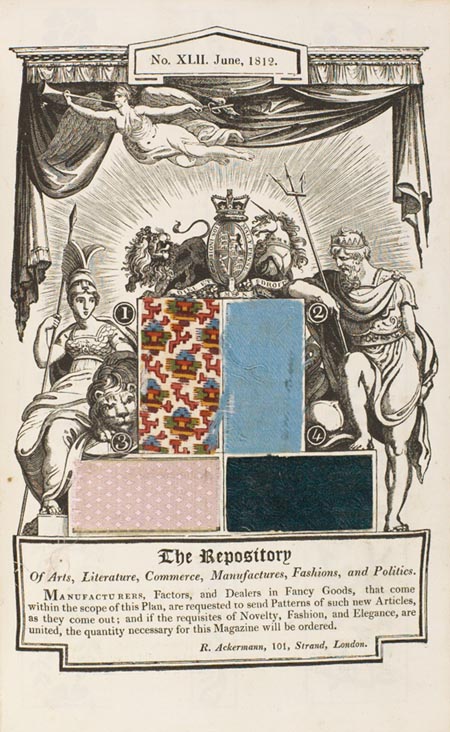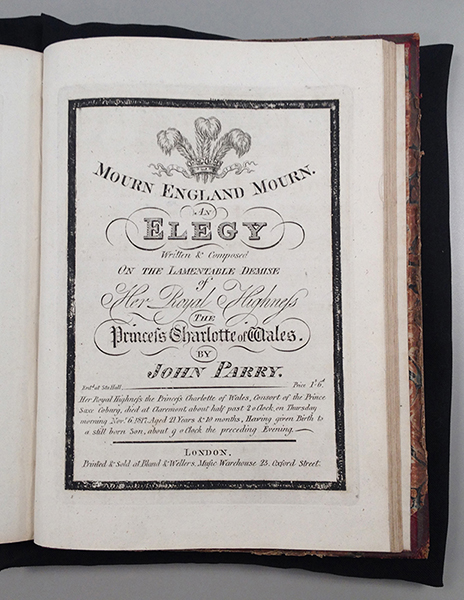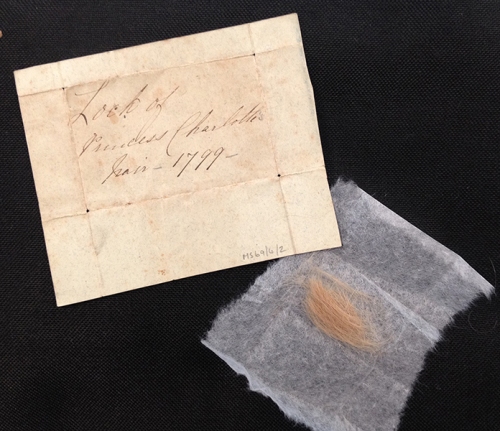Today marks the 350th birthday of Jonathan Swift (1667–1745), the Anglo-Irish satirist, essayist, pamphleteer, poet, and cleric, best remembered as the author of Gulliver’s Travels (1726). Swift was born in Dublin on 30 November 1667 and was the second child of Jonathan Swift (1640–1667), a steward of the King’s Inns, Dublin, and his wife, Abigail Erick (1640–1710). His father died two months before he was born. Unable to support her son, his mother placed him in the care of his uncle, Godwin Swift. He was enrolled at Kilkenny College in 1674, and in 1682 entered Trinity College Dublin. Having received his bachelor’s degree in 1686, Swift continued at Trinity College to study for a master’s. However, Roman Catholic unrest in Ireland following the Glorious Revolution in 1688 forced him to quit his studies and leave for England.
Embed from Getty Images
In England his mother found him a position as secretary to the English statesman and essayist Sir William Temple (1628-1699) at Moor Park in Surrey. During the subsequent decade, Swift assisted Temple in political errands and research for his essays and memoirs. Under Temple’s guidance, and with a rich library at his disposal, it was at Moor Park that Swift developed his skills as a writer. During this time he wrote a number of essays, including A Tale of a Tub and ‘The Battle of the Books’, published together in 1704 and both touching on the debate surrounding Temple’s essays on ancient and modern learning.
It was also during this time that Swift met Esther Johnson, known by her nickname “Stella”, whose mother was in the service of William Temple. Swift took a keen interest in Stella and acted as her tutor and mentor. The two would maintain a close relationship throughout their lives and a debate continues as to whether they were secretly married in 1716. Swift returned to Ireland twice during the decade he worked for Temple. During one of these visits, in 1695, he took the necessary steps to become an ordained priest in the Church of Ireland. After Temple’s death in 1699, Swift completed the task of editing and publishing his memoirs. This, however, resulted in a clash with members of the Temple family, most notably Lady Gifford (Temple’s sister), who argued against Swift’s inclusion of material against Temple’s wishes.
Sir William Temple had two sisters, Martha (later Lady Gifford) and Mary, and a brother, John. Sir John Temple (1632-1705) was an Irish lawyer and politician and father of Henry Temple, first Viscount Palmerston (1673-1757), who purchased the Broadlands estate in 1736. It is through this link that the Broadlands archives contain a number of items relating to Swift.The two earliest items date from 1724. The first of these is a letter to Henry Temple, first Viscount Palmerston, from Lewis Roberts, his lawyer in Dublin, dated 6 October 1724. The letters contains a reference to Swift’s speeches against William Wood’s Irish half penny [MS 62 BR140/4/8], delivered from the pulpit of St. Patrick’s Cathedral in Dublin where Swift had held the position of dean since 1713. William Wood was an English manufacturer who had been granted a patent to mint copper halfpence for Ireland. The response in Ireland was one of outrage. There was a strong belief that the wishes of the Irish parliament had been bypassed and that the inferior quality of the money would devalue Irish coinage and damage the local economy. Swift was one of the most vocal critics in the campaign against Wood and published several pamphlets containing open letters and poetic broadsides on the subject. The letters, written under the pseudonym M. B. Drapier, were later published collectively as Drapier’s Letters. The opposition to the halfpenny was so strong that it occasionally took on a violent form, with Oliver Ferguson noting that “in Cork a mob prevented a shipment of halfpence from being unloaded, and threatened to burn the ship; and in Dublin Wood was hanged in effigy – an event which Swift celebrated with A Full and True Account of…the Execution of William Wood.”
Among Swift’s poetic broadsides on the subject was ‘Prometheus’, originally published around November 1724. It was retitled ‘Prometheus. On Wood the Patentee’s Irish Half-Pence’ in later collections. A manuscript copy of the poem, dating from 1724, can be found in the Broadlands collection [MS 62 BR3/36].
Another group of items relating to Swift are three letters exchanged between Swift and first Viscount Palmerston from January 1725/6 [MS 62 BR3/63-5]. The two men had known each other since Swift’s time at Moor Park. As with other members of the Temple family, their relationship was strained. Three months earlier, in the fourth of his Drapier’s letters (titled To the Whole People of Ireland), Swift had named Palmerston among the Englishmen who held substantial sinecures paid for out of the Irish treasury.The short exchange, which can be found among Swift’s published letters, centres on the letting of rooms at Trinity College Dublin to a William Curtis who Swift claims “has been very unjustly and injuriously treated” [MS 62 BR3/63]. Swift is of the understanding that Palmerston had granted the rooms to a John Elwood for life and, as such, Elwood had the right to sublet them to Mr Curtis. In his response, Palmerston informs Swift that the rooms had been granted to Elwood for his personal use, and not for subletting, and that “When he quits, I am att liberty to dispose of the premises again” [MS 62 BR3/64]. In the final letter, Swift acquits Palmerston “of any injury or injustice done to Mr. Curtis”, noting that the “injury and injustice he received were from those who claimed a title to his chambers, took away his key, reviled and threatened to beat him, with a great deal more of the like brutal conduct” [MS 62 BR3/65].
While the matter is ultimately cleared up, the tension in the exchange is palpable. Swift, in his first letter, states that he will refrain from commenting on William Curtis’ character, referencing a Thomas Stauton who he had once recommended to Palmerston but “whom you afterward rejected, expressing your reason for doing so, that I had recommended him.” Concerning the rejection he concedes, with more than a hint of sarcasm, that “these are some of the refinements among you great men, which are above my low understanding” [MS 62 BR3/63]. Palmerston adopts an equally sarcastic tone in the opening of his reply, stating that “I should not give my selfe the trouble to answer your polite letter, were I as unconcerned about character & reputation as some are.” He then proceeds to clarify the conditions under which the rooms had been granted to Mr Eldwood and defend himself concerning his dismissal of Mr Stauton, which was due to “his demand of a large additional salary, more than he had before my time”, noting that “he left the office, and was not turned out” [MS 62 BR3/64].Palmerston concludes his letter with a powerful statement:
“My desire is to be in charity with all men; could I say as much of you, you had sooner inquired into this matter, or if you had any regard to a family you owe so much to; but I fear you hugged the false report to cancel all feelings of gratitude that must ever glow in a generous breast, and to justify what you had declared, that no regard to the family was any restraint to you. These refinements are past my low understanding, and can only be comprehended by you great wits. I always thought in you I had a friend in Ireland, but find myself mistaken. I am sorry for it; my comfort is, it is none of my fault. If you had taken any thing amiss, you might have known the truth from me. I shall always be as ready to ask pardon when I have offended, as to justify myself when I have not.” [MS 62 BR3/64]
Swift opens the final letter with the line “I desire you will give yourself the last trouble I shall ever put you to; I mean of reading this letter.” Then, in addition to acquitting Palmerston, he acknowledges his indebtedness to the Temple family, and defends himself against any misunderstanding, stating: “My lord, if my letter were polite, it was against my intentions, and I desire your pardon for it” [MS 62 BR3/64]. Palmerston has endorsed the letter as “Not answered”. The matter of the rooms at Trinity College was later taken up by third Viscount Palmerston in a letter written in 1813 to his agent, Graves Swan, in which he requests Swan to pursue his claim to the rooms [MS 62 BR146/10/1].
Jonathan Swift held the position of dean of St. Patrick’s Cathedral in Dublin until his death on 19 October 1745, at the age of 77.

![The works of Sir William Temple, bart. edited by Jonathan Swift [Rare Books quarto PR 3729.T2]](https://specialcollectionsuniversityofsouthampton.files.wordpress.com/2017/11/works-of-sir-william-temple-3.jpg?w=500&h=403)
![Prometheus, a Poem by Jonathan Swift [BR3/36]](https://specialcollectionsuniversityofsouthampton.files.wordpress.com/2017/11/prometheus-crop-2.jpg?w=500&h=307)
![Swift's signature [MS 62 BR3/63]](https://specialcollectionsuniversityofsouthampton.files.wordpress.com/2017/11/signature.jpg?w=500&h=244)




 As part of the Explore Your Archive campaign the Special Collections team will be hosting two events. On Wednesday 22 November, there will be a drop-in session highlighting an array of material from the manuscript and printed collections relating to protests, rebellion and revolution.
As part of the Explore Your Archive campaign the Special Collections team will be hosting two events. On Wednesday 22 November, there will be a drop-in session highlighting an array of material from the manuscript and printed collections relating to protests, rebellion and revolution.
![Extract from grant for a subscription for a trading voyage [MS62 BR4/1/1]](https://specialcollectionsuniversityofsouthampton.files.wordpress.com/2017/11/ms62_br4_1_1_crop.jpg?w=500&h=252)




![Men's football team, 1953-4 [photo_MS1_7_291_22_4] Men's football team, 1953-4 [photo_MS1_7_291_22_4]](https://live.staticflickr.com/65535/50089268168_f26eed63ef_s.jpg)
![Women's rowing team, 1961-2 [MS1_7_291_22_4] Women's rowing team, 1961-2 [MS1_7_291_22_4]](https://live.staticflickr.com/65535/50090079577_3b7acbde42_s.jpg)
![Men's rugby team, 1953-4 [MS1_7_291_22_4] Men's rugby team, 1953-4 [MS1_7_291_22_4]](https://live.staticflickr.com/65535/50089268523_4f2c587220_s.jpg)
![Women's hockey team, 1953-4 [MS1_7_291_22_4] Women's hockey team, 1953-4 [MS1_7_291_22_4]](https://live.staticflickr.com/65535/50090079692_28114e9c7d_s.jpg)